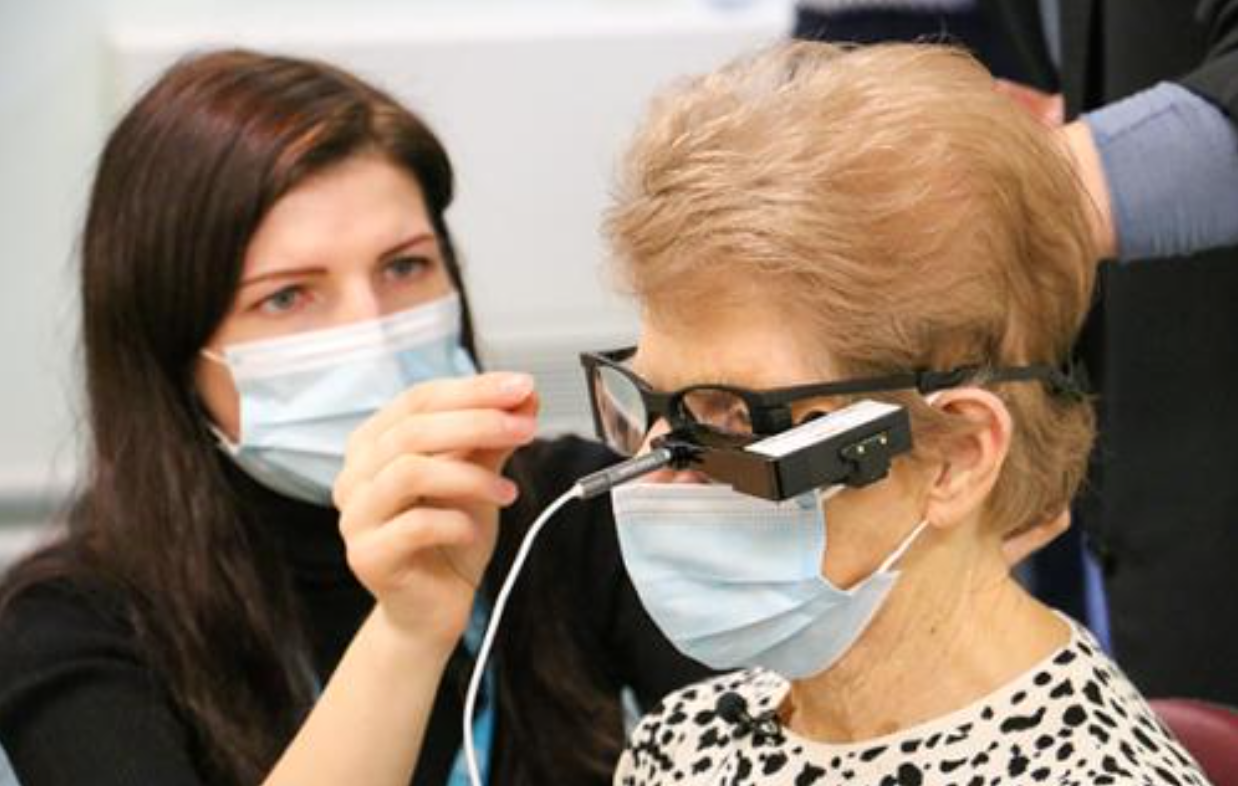Blind UK patient sees signals after bionic eye implant at Moorfields hospital in London
‘This groundbreaking device offers the hope of restoration of sight to people suffering vision loss due to dry AMD’

Your support helps us to tell the story
From reproductive rights to climate change to Big Tech, The Independent is on the ground when the story is developing. Whether it's investigating the financials of Elon Musk's pro-Trump PAC or producing our latest documentary, 'The A Word', which shines a light on the American women fighting for reproductive rights, we know how important it is to parse out the facts from the messaging.
At such a critical moment in US history, we need reporters on the ground. Your donation allows us to keep sending journalists to speak to both sides of the story.
The Independent is trusted by Americans across the entire political spectrum. And unlike many other quality news outlets, we choose not to lock Americans out of our reporting and analysis with paywalls. We believe quality journalism should be available to everyone, paid for by those who can afford it.
Your support makes all the difference.Once the stuff of science fiction, we may now be edging closer to a world in which bionic eyes can be used to restore sight in the blind following the latest success of a groundbreaking treatment.
An 88-year-old grandmother who cannot see with her left eye has been able to detect visual signals for the first time after being fitted with a "revolutionary" new bionic chip.
The woman, from Dagenham, suffers from geographic atrophy – the most common form of dry age-related macular degeneration (AMD), which affects millions of people worldwide and can cause loss of sight.
“Losing the sight in my left eye through dry AMD has stopped me from doing the things I love, like gardening, playing indoor bowls and painting with water colours,” said the patient, who has not been identified.
“I am thrilled to be the first to have this implant, excited at the prospect of enjoying my hobbies again and I truly hope that many others will benefit from this too.”
For the treatment, a 2mm wide microchip was surgically inserted under the centre of the patient’s left eye. She was then given high-tech camera glasses to capture and record the scenes in front of her.
This is relayed to the microchip implant in her eye, which in turn transmits the data to a small computer attached to her waistband, which uses artificial intelligence algorithms to process the information and guide the focus of the glasses.
Finally, the glasses project this image as an infrared beam back through the eye to the chip, which transforms this into an electrical signal that travels back through the retina cells and into the brain. The brain then interprets this signal as if it were natural vision.
The patient was fitted with the implant at Moorfields Eye Hospital, in London, as part of a Europe-wide clinical trial backed by the National Institute for Health Research (NIHR), Biomedical Research Centre and the UCL Institute of Ophthalmology.
Mahi Muqit, a consultant vitreoretinal surgeon at Moorfields, said the device “offers hope” to people suffering loss of vision due to dry AMD.
He said: “This groundbreaking device offers the hope of restoration of sight to people suffering vision loss due to dry AMD.
“The success of this operation, and the evidence gathered through this clinical study, will provide the evidence to determine the true potential of this treatment.”
Join our commenting forum
Join thought-provoking conversations, follow other Independent readers and see their replies
Comments